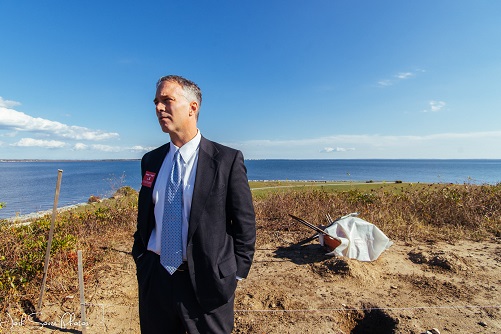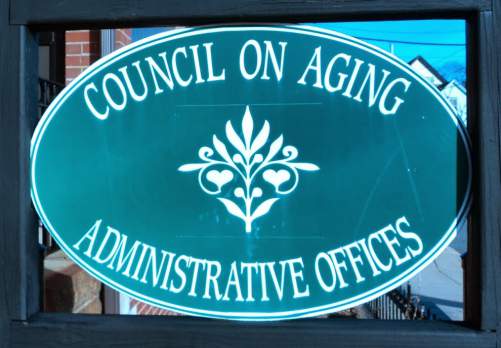Mayor Jon Mitchell testified before the U.S. House Committee on Natural Resources Subcommittee on Water, Power and Oceans on Tuesday to advocate for changes to the Magnuson-Stevens Fishery Conservation and Management Act. The Magnuson-Stevens Act is subject to reauthorization every ten years, and Congress is currently considering its reauthorization.
As Mayor of the nation’s top commercial fishing port, Mitchell testified on changes to several aspects of the Act.
The regional fisheries management councils that determine overfishing have had severely limited flexibility since the 1996 passage of the Sustainable Fisheries Act as it sought to end overfishing immediately to quickly rebuild stocks by imposing a strict, ten-year rebuilding schedule for stocks deemed overfished. Mayor Mitchell testified that there is no biological justification for this timetable, and that commercial fishermen are often unable to catch their full scientifically-justified quota because when quotas are set too low for certain overfished species, it prevents fishermen from catching the other, healthy species that intermingle with them. These so-called “choke” species are the reason why fishermen in the North Atlantic cannot catch their full quota of healthy, abundant species such as haddock.
“The ten-year rule is arbitrary, and its establishment was at odds with the underlying premise of regional management,” Mitchell said in his remarks as prepared for testimony. “Regional councils should have the flexibility to set rebuilding timelines for stocks under their jurisdiction based on the unique biological and ecological conditions, and by giving appropriate weight to the economic wellbeing of fishing communities. Eliminating the ten-year rule should not be regarded as a compromising of the conservation imperatives of the Act. Quite to the contrary, replacing the ten-year rule with one that is based on the regeneration rate of a threatened fish stock — as some members have proposed — will lead to clearer, more predictable outcomes without causing unnecessary disruption to fishermen, and without compromising the rebuilding of fish stocks. The term ‘flexibility’ should not be understood as a euphemism for deregulation. The councils are in the business of finely calibrating decisions in light of relevant environmental and economic data, and their own experience and expertise. In the discharge of their duties, they tend not to win friends either in the fishing industry or in the conservation community, and given the goals of Magnuson-Stevens, that’s probably the way it should be.”
The Mayor also advocated for councils to have greater flexibility in setting Annual Catch Limits. NOAA’s recently-revised National Standard One Guidelines instructed regional councils to consider both scientific and management uncertainty when setting quotas, with many of the recommendations significantly improving the councils’ ability to achieve the Magnuson-Stevens Act’s stated goal of achieving optimum yield of fisheries “on a continuing basis.”
Mayor Mitchell encouraged cooperative research between government and the industry in his remarks before the congressional subcommittee.
“In New England, some of our best scientific innovations have come from collaborations between the industry, government and independent scientists,” he testified. “For example, in the 1990s, the Atlantic scallop fleet began deploying video survey technology to generate additional measurements of the scallop population. These surveys, together with additional research on gear and habitats, led to revised, more accurate estimates of scallop abundance, and are one of the primary reasons the Atlantic scallop fishery became the most successful in the world. Scientists at the University of Massachusetts-Dartmouth are currently developing new methods to apply the same video survey techniques to the region’s groundfish stocks. The problem is that these collective victories tend to be one-off. The Act must lead to a more systematic approach to encouraging cooperative research. Requiring NOAA to come up with a plan to implement and conduct cooperative research programs would go a long way. Gathering data from various sources will lead to greater accuracy in stock assessment and reduce the need for uncertainty buffers in the setting of annual catch limits.”
The Mayor also said that cooperation could be greatly facilitated by siting NOAA facilities in fishing communities, such as New Bedford – New England’s top port.
“In too many places across the country, geographic distance between regulators and commercial fishermen is an impediment to cooperation. The reality is that many key NOAA scientific and administrative facilities are not located in or near fishing communities, making it more difficult to achieve some level of understanding between the regulators and the regulated community,” said Mayor Mitchell. “One of the more egregious examples concerns the Port of New Bedford. Despite accounting for more than a third of the landings in New England, New Bedford is the site of fewer than ten out of over five hundred of NOAA employees in New England. If there is to be real collaboration, NOAA must give strong consideration in its siting decisions to locating facilities in places where commercial fishing is actually taking place.”
Mitchell also argued that the designation of the Northeast Canyons and Seamounts Marine Monument under the Antiquities Act lacked the scientific rigor and industry input that typically comes with temporary ocean closures – much less permanent closures – and its process outside the Magnuson-Stevens Act was, however well-meaning, problematic and ultimately works against long-term interests of stakeholders. The Mayor advocated for a legislative solution to the inherent conflict between the Magnuson-Stevens Act and the Antiquities Act so that decisions to close areas of the ocean to commercial activity will have the full benefit of a rigorous and transparent process.
Mayor Mitchell also testified that he agrees with the proposal to revisit the term “overfishing,” which is used to describe a stock that has fallen below a minimum biomass such that “maximum sustainable yield” cannot be generated. “There can be a number of reasons for the loss of biomass of a given fish stock that have nothing to do with fishing activity, including the effects of climate change, pollution, changes in migration patterns, other offshore activity, or increased presence of natural predators,” he said. “The term also can complicate management of multi-species complexes and management measures that are necessary to address stock diminishment. Describing threatened stocks instead as ‘depleted’ would be a more neutral, and often more accurate, label.”
Mitchell advocated for enhancing funding for scientific research, as stock assessments are the most important source of information in the regulatory process – an issue which the regulators and regulated community agree.
“Our nation’s fisheries are already some of the best managed and most conservation-minded and sustainable fisheries in the world,” he said in conclusion. “By making reasonable revisions to the Magnuson-Stevens Act, Congress can ensure that our fisheries are environmentally sustainable, and that commercial fishermen can continue making vital economic contributions to their communities.”
 New Bedford Guide Your Guide to New Bedford and South Coast, MA
New Bedford Guide Your Guide to New Bedford and South Coast, MA








